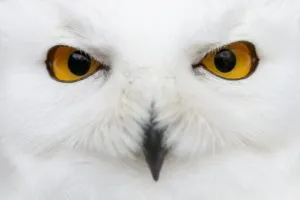If you’re curious how many snowy owls are left or to what extent snowy owls are endangered, you’ve come to the right place.
Snowy owls are birds of prey like buzzards, hawks, and eagles which are abundant across the globe. However, snowy owls are adapted to live in the extreme conditions of the Arctic tundra. Although rarely, snowy owls are also seen in some other regions in the Northern Hemisphere. So does that mean they are endangered and facing the threat of extinction?
Snowy owls are classified as “vulnerable” by the IUCN Red List which means they are not endangered just yet. However, in some areas, such as Norway, snowy owls are rated as “endangered” due to decreasing breeding records over the past 30 years. There are estimated to be between 14,000 and 28,000 mature snowy owls left.
In this article, we will look at the different threats snowy owls are facing and what’s being done to protect them. Let’s dive in.
Are Snowy Owls Endangered?
No, the conservation status of snowy owls is “vulnerable”, not endangered, according to the last assessment by the International Union for Conservation of Nature (IUCN) in 2021. This is the authoritative organization when it comes to endangered animals.
Snowy owls are evaluated as animals vulnerable to global extinction because their populations have been declining by 30 to more than 50 % over the last 10 years or 3 generations. They would become endangered when their populations start to rapidly decline by 50 to more than 70% according to the IUCN assessment criteria1 (source: IUCN and Britannica).
Currently, the total estimation of mature snowy owls is 14,000-28,000 individuals. There are approximately between 1,200 and 2,700 pairs of snowy owls in the European population. A great decline of 64% was recorded for snowy owl populations in USA and Canada with an estimation of less than 30 000 snowy owl individuals left there.
However, in Norway snowy owls are considered “endangered” by the latest Norwegian Red List evaluation showing a small population for the region of fewer than 50 individuals2 (source: Bird Life Norge).
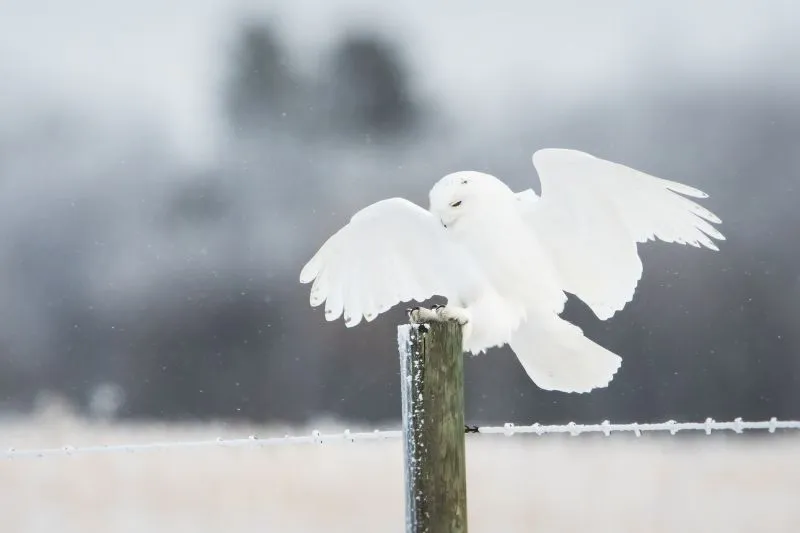
What are the Biggest Threats to Snowy Owl? Why Are Snowy Owls Endangered?
Most of the reasons leading to a decrease in the number of snowy owls are threats caused by human activities such as hunting and urbanization. Of course, it shouldn’t be a surprise that climate change also plays a crucial part in snowy owls becoming endangered even if it is not directly, but through causing prey availability shifts or habitat alterations3 (source: IUCN).
Let’s take a look at these closely:
1. Human Activities
Snowy owls and native people throughout the Arctic and North America have a long history. The owls have been hunted for food and their body parts, such as feathers and claws, have had various cultural functions4 (source: D.W. Holt, et al, Ardea, Vol. 97, No. 4, pp.555-561 2009).
Nowadays, however, the biggest threats snowy owls are facing are those caused by urbanization. Nesting habitats of snowy owls are often destroyed by urban development or the owls are forced to leave their nests if there is human presence nearby like photographers and tourists. That is why usually nesting sites are kept a secret from the public and their protection must be a priority.
In Canada, high mortality of snowy owls is recorded to be caused by collision with vehicles, airplanes, or electrical wires and entanglement in fishing gear. While in Russia, snowy owls are often caught by accident in fox traps5 (source: Canadian Government).
2. Changes in Prey Availability
Snowy owl numbers are highly dependent on prey availability. During the breeding season, snowy owls mostly eat lemmings. Lemming abundance cycles are becoming more and more irregular within the areas inhabited by snowy owls and that has a direct effect on the reproductive success of the owl6 (source: Canadian Government).
The shifts in rodent prey availability are connected to climate change which is causing alterations in precipitation and vegetation, as well as the quality and amount of snow covering the tundra. Furthermore, higher temperatures are considered to have an impact on the hunting success of snowy owls7 (source: Bird Life Norge).
However, during the winter, when snowy owls are not in their breeding period, rodents are not the primary food source. Then snowy owls prefer to prey upon large birds like grouse herring gull and sea ducks. During the winter, in the Arctic and alpine regions snowy owls like to feed on the small raptors willow and ptarmigan.
Human over-exploitation of the winter prey for snowy owls is greatly responsible for food depletion for the owls8 (source: Bird Life Norge).
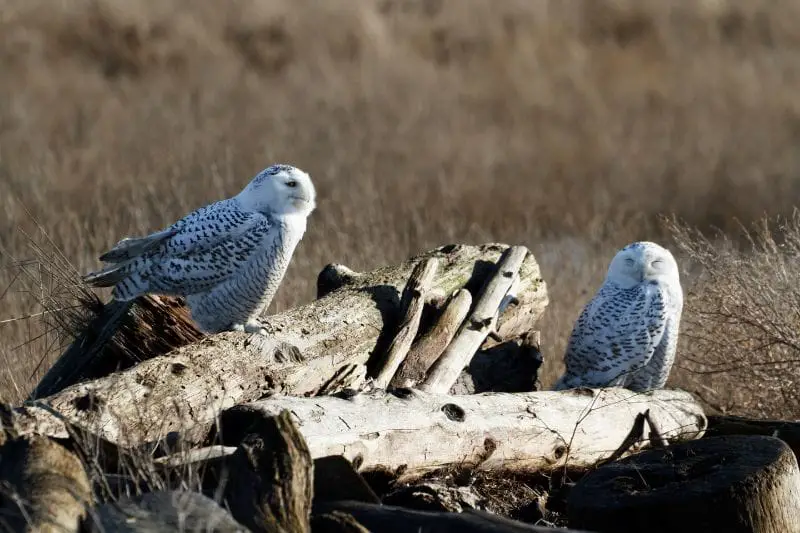
Are Snowy Owls Protected?
Snowy owls are not endangered in the United States, however, they are protected under the U.S. Migratory Bird Act. They are also on multiple North American watch lists and in Canada snowy owls are prioritized for conservation in one or more Bird Conservation Region Strategies.
Snowy owls are protected by law from hunting in Sweden, Finland, and Norway from 1951, 1962 and 1965, respectively.
Another great example of helping snowy owls is the permission by law to photograph and stay close to their nests which is already implemented in Iceland, Finland and Britain, and more countries home to the owls should follow them.
Additionally, when snowy owls are wintering at major airports in the U.S. they are caught and released at distant locations to prevent accidents with aircraft9 (source: IUCN).
Related Questions
Are Snowy Owls Extinct?
No, snowy owls are not extinct but they are now vulnerable to extinction. In 2019 it was calculated an annual decrease of approximately 1.7%. With the available estimates and the continuous threats in 3 generations, the population of snowy owls is likely to face global declines of 30-49% or even higher which could lead snowy owls to become endangered.
How Many Snowy Owls Are Left?
Most recent estimations of snowy owl populations conclude that there are between 14,000 and 28,000 mature individuals. However, snowy owl populations fluctuate across different regions. So there is a high probability population numbers are overestimated now just as it was suggested in the past.
What are Snowy Owls Best Known For?
Snowy Owls are best known for their majestic appearance, characterized by their beautiful white plumage that helps them blend seamlessly into the snow-covered Arctic landscape. With a wingspan of up to 5 feet (1.5 meters) and their striking yellow eyes, these iconic owls have become a symbol of the polar region’s enchanting wildlife. In addition to their appearance, they are also renowned for their silent flight, allowing them to stealthily hunt their prey in the vast Arctic expanses.
How Rare is a Snow Owl?
As of 2021, the total estimation of mature snowy owls is 14,000-28,000 individuals. Snowy Owls are considered relatively rare and elusive birds. They have a limited breeding range in the remote Arctic tundra, making it challenging to spot them in the wild. Additionally, their population numbers can vary significantly from year to year, influenced by factors like food availability and lemming population cycles, further adding to their rarity and unpredictable sightings.
Where do Snowy Owls Live? Where Can I See Snowy Owls in the USA?
Snowy Owls predominantly inhabit the vast Arctic regions, including Alaska, northern Canada, Greenland, and parts of northern Europe and Asia. They are well adapted to the extreme cold and harsh conditions of the tundra, where they build their nests on the ground or on low elevated spots like mounds or boulders. During winter, some individuals migrate southward, occasionally reaching regions of the northern United States, providing unique opportunities for bird enthusiasts to observe them outside their usual range. In 2022, there was even a mysterious, extremely rare sighting of a snowy owl in Orange County, California!


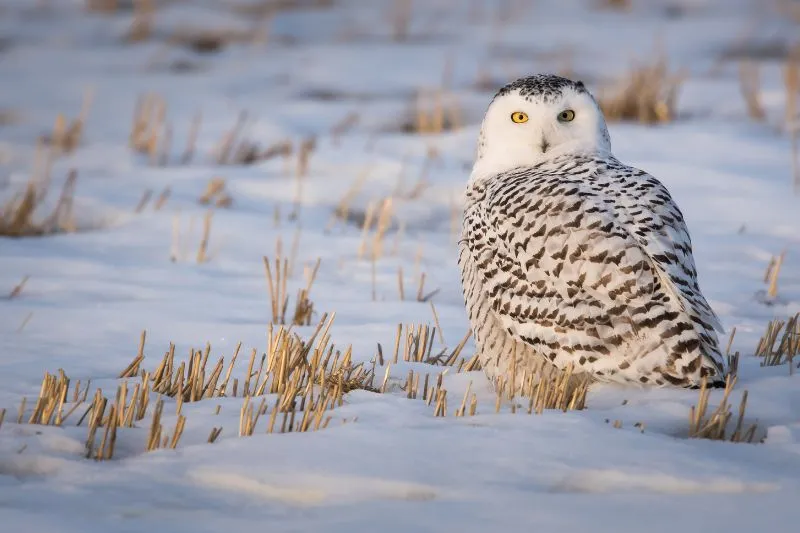
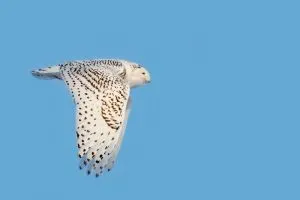
![Read more about the article 15 Curious Facts About Snowy Owls [#10 Will Surprise You!]](https://polarguidebook.com/wp-content/uploads/2023/02/Snowy-Owl-Facts-300x200.jpg)
